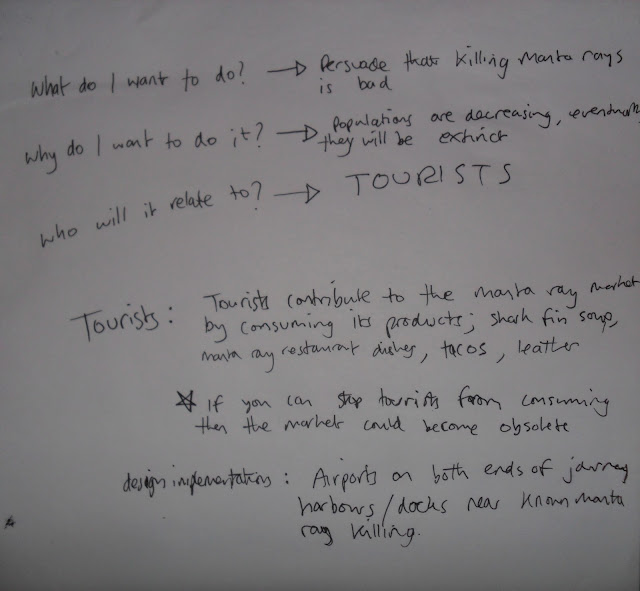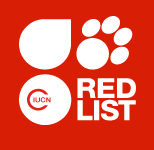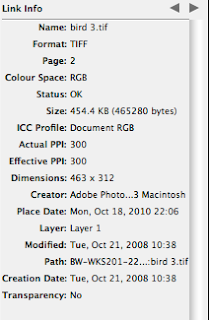In this session we have been given an inDesign document with 8 mistakes and we need to try and find what they are. They are not mistakes in terms of content but more in terms of production.
1.One of the first most obvious mistakes is that there is an RGB colour in the swatches. The document is a print document so it is in CMYK format. The RGB swatch should not be there.
2. Another obvious mistake is that two of the spot colours are not used in the image but are seen in the separations preview. This means that the document will require 7 plates; C, M, Y, K and 3 other pantone spot colours. It only really needs 5 printing plates so this would create unnecessary cost.
3. There is a missing link for one of the images called "tree sillhouette.ai" which means that the original image has been moved or deleted since placing it in the document. This means that it will not be able to be printed properly.
4. the image "Bird 5.psd" is in an ok file format but the resolution of the image is set to 72PPI which is fine for screen based media but should be 300PPI for print.
5. The image "Bird 3.tiff" is in RGB colour mode instead of CMYK.
6. The document has a bleed of 3mm which is a good standard bleed and it has been used on pages 2, 3 and 4 but not on the first page. That means that there could be mistakes in cutting the document after printing and can leave a white space around the page.
7. The image "Bird 1.tiff" has been scaled down to 15.8%. Only Adobe Illustrator files should be scaled up or down in InDesign because they are still vectorised. Other image files should be created at the size that they will be used in the document and then should not have their size changed at all.
8. The final error in the document is on the back page where it says 'Back Cover'. The type is in Registration colour which is used for registration marks and is actually printed on every plate. This can cause too much ink to be used on the paper and can cause it to tear or distort.




















































